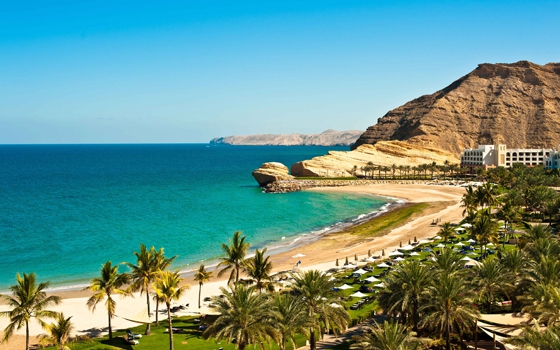Oman is pressing ahead with a number of new developments in its tourism sector as part of a drive to diversify its economy amid a backdrop of sustained low global energy prices.
By the numbers
Tourism is one of the five key sectors identified in Vision 2020 – the sultanate’s national development strategy – to encourage economic growth, expand the services sector and build up the private sector.
Under the plan, Oman aims to increase tourism’s contribution to GDP to 5% by 2020, up from a direct contribution of 2.5% of GDP last year, according to the World Travel and Tourism Council (WTTC).
Oman’s tourism industry has grown steadily over the past five years, with inbound tourism averaging an increase of 9% per year since 2010, according to the WTTC. Last year, Oman received a record 2.6m tourists government figures showed.
In July 2016 the National Centre for Statistics and Information (NCSI) reported that inbound visitors grew 27% year-on-year, with visitors from the Gulf accounting for over half of arrivals. For the period from January through to July, inbound arrivals reached 1.5m NCSI data showed, suggesting that Oman will surpass the 1.8m tourist arrivals predicted in the WTTC report for this year.
MICE segment to drive growth
In an attempt to further encourage growth in the tourism sector, Oman has identified the meetings, incentives, conferences and exhibitions (MICE) segment as one with significant potential.
To this end, the first phase of the Oman Convention and Exhibition Centre (OCEC) opened in late September. The OCEC features a 22,000-sq-metre exhibition hall and a 12,000-sq-metre outdoor exhibition space. Phase two – which is expected to be completed in December of next year – will include an indoor theatre and several ballrooms.
The OCEC is part of the first phase of the Madinat Al Irfan urban development project, spearheaded by the Oman Tourism Development Company (Omran), the government’s tourism investment arm. Located near the Muscat International Airport, the 7.4m-sq-metre Madinat Al Irfan project will offer hotels, residential developments, business parks, leisure areas and retail spaces, and is expected to be operational by 2017.
Oman lies within seven hours flying time of around 50% of the world’s population, a geographical advantage that industry professionals in the sultanate hope to leverage, especially as Oman competes with other regional powerhouses that have long dominated the conference and exhibition space.
Leisure segment on the rise
Increased investment in the tourism sector is also targeting Oman’s leisure segment.
One of the most recent projects is the development of the Mina Sultan Qaboos Waterfront, which aims to transform Port Sultan Qaboos – previously Muscat’s main commercial port – into a major tourist destination.
The OR500m ($1.3m) mixed-use waterfront project will offer hotels and resorts, retail and residential areas, as well as entertainment and cultural areas, and is expected to provide 12,000 direct and 7000 indirect jobs.
Also overseen by Omran, construction on the 101-ha site is set to begin in the second quarter of next year. The first phase of development is slated for completion by 2020 in time for events, such as Expo 2020 and the FIFA 2022 World Cup, which are being held in the region, according to a company release.
Economic multiplier
Meanwhile, industry stakeholders point to the knock-on benefits of the new projects.
The potential for tourism development projects to contribute to the Omani economy goes beyond their direct benefits, according to Ahmed Dabbous, CEO of Muriya Tourism Development, a property developer focused on the leisure segment.
“The economic multiplier effects of hotel and tourism developments are significant,” he told OBG. “Apart from job creation and infrastructure investment, we see significant engagement with small and medium-sized enterprises, as well as in the local economies where the projects are located.”
According to a government prospectus from June, at least 39 major tourism projects are at some stage of design, construction or tendering across the country.
Oxford Business Group
11 October























































